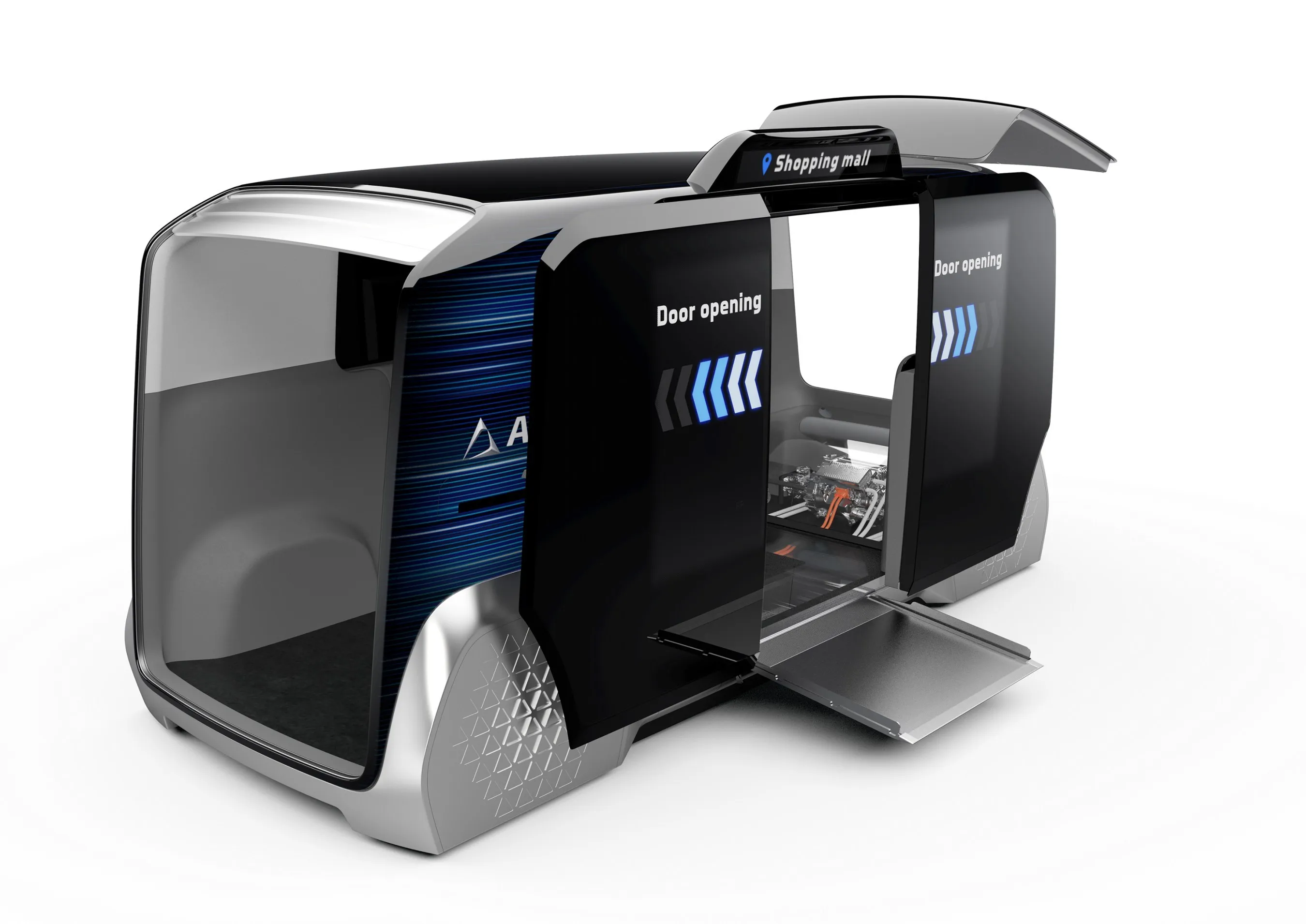
Aisin says the i-mobility Type-C20 vehicle uses a range of sensors to detect obstacles while also offering an electric ramp to provide safe boarding access for wheelchair users.
Justin Kahl, project engineer at Aisin Group, told ITS International at CES 2020: “The far right camera carries out facial recognition and situational awareness, allowing the ramp to be deployed if it detects a person on a wheelchair.”
The zero-emission vehicle's regenerative brake system, rail-free power sliding doors and heat management and thermal control allow more space for a larger battery to help extend range, the company adds.
According to Aisin, the in-cabin monitoring system combines with location-based data to meet specific user needs. The system is also expected to connect with external information resources, allowing on-screen graphics to change and respond to rider interest and local attractions.










